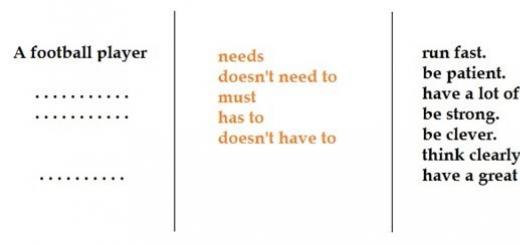It's no secret that children's briefcases are a heavy burden. “Real” backpacks, with the vaunted orthopedic back, even when empty, already weigh quite a bit. It is only in photographs on the Internet that a schoolboy looks touching and cute with a briefcase over his shoulders. On real school days, the backpack swells to enormous sizes: textbooks (most of them are A4 in size), reading books, workbooks, paints (gouache of at least 9 colors), oilcloth for the table, if drawing, a form for physical education, a three-story pencil case (otherwise the neighbor has one) the worse I am), notebooks, a folder for notebooks, a folder for work, a folder for music and a bunch of everything else that they ask you to bring.
Even before my child went to school, I noticed how children go to school. Dad walks ahead: his hands are in his pockets, and the child trails behind, bent over the briefcase. Dad also “encourages”: “Come on faster, we’re late.”
Even then I decided that my daughter’s briefcase was in primary school I’ll carry it myself, and no arguments from other parents, such as the need to cultivate independence, whether to wear something all my life, it’s already big, it’s his (her) responsibility, the briefcase is orthopedic - they won’t convince me. The child’s health is more important, a briefcase is indeed a very serious load on the child’s fragile spine, even if it is 10 times orthopedic and costs...eleven thousand. The child still has to sit at his desk for several hours, and then do his homework at home. I see that by the end of the year many people have incorrect posture and a hunched back. But for some reason, parents don’t see a school bag as a threat. Moreover, even some doctors claim that “proper wearing is completely safe.” It may be safe for some, but children are different. Someone's weak muscular system, someone has a lack of vitamins D and calcium (hello to residents of the northern regions), for someone too rapid growth provokes stooping, why add an unfavorable factor? Yes, someday the child will carry the entire “load of knowledge” on his own, but by this time he will have grown up and become stronger.
In Europe, most schoolchildren carry their schoolbags using a special trolley.
They gave us one as a gift. We used it twice when we had to return all the books. Our roads are not European, but the most ordinary, Russian ones with potholes. The school only installed ramps at the entrance this year, and we had to carry both a briefcase and a cart to the third floor, since neither an elevator nor ramps had ever been planned. When we walked home, half the class ran after us and looked at the cart as if it were an elephant. It’s a convenient thing, I really liked the cart, but there are no conditions in our school and the roads are bad, so we don’t use it.
Not all parents are so careless. This spring, I noticed how a car drove up to the school, a man got out, walked around the car, opened the door and offered his hand to his student daughter, helped her out, took her briefcase, went up to the entrance, opened the door, let his daughter go forward, and waited for her to change clothes. shoes, helped her put on her briefcase, kissed her forehead and wished her a good day. I myself wanted to have such a dad. One mother at school also carried her son’s briefcase all the time, while talking with other parents, I casually praised her, saying that she was taking care of her child’s health. They told me that her child had problems with the spine, and it was the children’s orthopedist who forbade him to carry heavy objects, including a briefcase.
When I was choosing a briefcase for my daughter, one of the main conditions was its weight. Therefore, I even paid attention to the “pawls” of the locks; on some models they are metal and heavy, why, one wonders, the extra weight. When my daughter got older, I began to look at the backpacks of high school students, and I liked them more than these “skins” of first-graders. They are much lighter and simpler, and even cheaper. In the same Sportmaster you can buy them on sale at a big discount.
This year my daughter went to 4th grade, today I carried her schoolbag to school myself. She would still have to drag him to the third floor. I usually throw it over my shoulder, it’s more convenient, even though I’m an adult, but for me it’s also heavy. I asked my daughter what the girls were saying in class, were they teasing? The daughter answered, on the contrary, almost with envy: “It’s good for you, mom is helping.” We must protect children's health even from an orthopedic bag.
Carrying a briefcase that exceeds the permissible norms, affects the spinal column and internal organs, besides, the child gets physically tired and walks.
In the near future, this will lead to back pain, curvature of the spine, spoil your posture and gait, and can cause radiculitis and other diseases.
In addition to all of the above, prolapse of internal organs is possible; this can have a particularly serious impact on the health of our girls - expectant mothers. That is why it is so important to comply with the requirements established by SanPiN.
Excess backpack weight increases danger of hand joint diseases. Children who constantly carry heavy objects may develop flat feet. A heavy backpack, like any other excessive load, increases the risk of injury; fatigue has a bad effect on work ability: a tired child cannot immediately get into work, and academic performance suffers.
The problem of the weight of a school bag is acute in many countries around the world.
4. Experience of foreign countries in solving the problem of reducing portfolio weight
This problem is not limited to our country. For example, in August 1996, the Ministry of Education Austria decided to limit the maximum weight of school bags and backpacks to 10% of the student’s body weight.
In Taiwan have already created a 10-inch Tablet PC that weighs just over a kilogram.
The Malaysian authorities also announced their intention to replace textbooks with laptops a couple of years ago. They proposed that computer companies develop a cheap and virtually weightless computer costing no more than $50 that students could use from primary classes before college. You load the desired disc into it and read the textbook, you don’t even need a keyboard.
In America have long found a solution in a double set of training kits. In schools, everyone is assigned a personal box in which the student can put everything they need during class. Very convenient - one set at home, the other at school.
School bags, without which it is impossible to imagine modern Russian students, are prohibited in many states of America. California law provides hefty fines to parents and schools for carrying briefcases that can cause spinal curvature.
Schoolchildren there must use only rolling bags. Russian doctors are not so categorical; it is believed that a correctly selected briefcase not only will not spoil, but, on the contrary, will create good posture.
In Europe They lighten the weight of briefcases in their own way - during classes, children are given sheets with the topic of the lesson covered and are provided with photocopies of pages from the same textbook. They go to school light, and at home they file the school lecture in a folder.
In Russia They are also thinking about replacing textbooks with technology. The option of dividing the textbook into quarters is being considered. This decision has its supporters and opponents.
The weight of the portfolio will become lighter, but the implementation of this idea will require a lot of money, and it will be difficult for the student to look at the material that has already been covered or remains to be covered (if you do not carry all four parts of the textbook with you).
My son is going to first grade this year. He already has a backpack. I don’t know how much it cost: it was given to us as a gift. It is black with a picture of a racing car. The child really likes it.
But choose the main attribute school life need to be done carefully.
At the Center for Hygiene and Epidemiology in Belgorod region Specialist of the Department of Hygiene for Children and Adolescents Andrey Tovsty told which backpack can be considered correct. And ours, alas, did not fall into this category.
“This is a bad backpack,” the doctor concluded, turning it over in his hands. – There are technical regulations for children’s products, sanitary rules. And here there is no reference to their compliance - there is no EAC marking (from the English Eurasian Conformity - a sign of product compliance with the requirements of technical regulations of the EurAsEC Customs Union - author's note)».
Among the advantages, Andrei Igorevich noted only the relatively light weight and the presence of reflective elements on the body of the backpack. And I questioned all other characteristics:
“The back, although hard, is very weak. Most likely just cardboard. And it should be tougher, made of polymer, so that the curvature of the child’s spine in the lumbar region does not change under load.”
Photo by Vadim Zablotsky
The upper fabric appears to be water-repellent, but its quality also raised questions among the specialist. As well as the internal structure of the backpack:
“We do not standardize this indicator, but it is still recommended that there be two compartments inside.”
According to Andrei Igorevich, the right backpack should be light and durable, with a shape-resistant back, and made of fabric that has water-repellent properties. The combination of these qualities, according to his experience, will cost no less than 4 thousand rubles.
We choose, try on
“Some parents buy soft backpacks for primary school children, but this is wrong. A child’s back at this age is not yet accustomed to stress; scoliosis can easily develop,” warned the senior salesperson at the OPTimist stationery store. Yana Ezhova.
According to her, for a first grader it is better to choose an ergonomic backpack that distributes weight evenly. For thin children, a T-shirt backpack with a narrower shape than the bottom is more convenient. And it’s good if the backpack has two sections: for books and notebooks.

Photo by Vadim Zablotsky
There are backpacks in which the straps are adjustable not only from below, but also from above: these can be ideally adjusted to any body type. Some backpacks have special loops on the back wall that allow you to tighten the straps according to the child’s height. This parameter is especially important for rapidly growing or, conversely, too small schoolchildren.
According to the seller’s observations, Belgorod parents are more often interested in the anatomical back and choose a backpack style that makes it convenient for the child to open it. Make sure there are secure locks, pockets for small items and water bottles. They also pay attention to the color of the backpack: so that it does not get dirty and is easy to clean. More often they take cost-effective three-in-one sets: backpack – pencil case – change bag.
“It is advisable to choose a backpack together with your child. Come to the store, try it on: to make sure it fits well and is comfortable with it. In addition, the child himself will be able to choose a backpack with a picture he likes. With such a backpack, he will be more willing to go to school,” advised Yana Alexandrovna.
Unhealthy economy
The right backpack for a junior high school student is a fundamental point, the pediatrician and sports doctor regional center for medical prevention Olga Ilyadis.
"IN elementary school approximately one third of children have poor posture. To prevent curvature of the spine, it is necessary not only to ensure that the child does not slouch when walking and sits straight at the study table, but also to provide him with a hard mattress for sleeping and a proper backpack with an orthopedic back. An elastic gasket in the back wall of the backpack prevents its deformation and protects the lumbosacral spine,” explained Olga Valerievna.

Infographics by Lyubov Turbina
You also need to ensure that the backpack fits on the child’s back: the top edge of the backpack should be at shoulder level, the bottom at pelvis level. The bottom should also be rigid so that it does not sag under the weight of books, the straps should be wide, 4–6 cm, and with soft shock-absorbing pads that will not rub your shoulders. It is also important that the backpack has reflective elements.
“The weight of the backpack together with its contents should not exceed 10–12% of the child’s weight,” Olga Valerievna emphasized.
Heavy burden
According to SanPiN, the weight of an empty backpack is no more than 700 g, and a daily set of textbooks and writing materials is no more than 2 kg.
“Weight standards are far from reality,” noted a primary school teacher at school No. 47 Irina Krechneva.
Some textbooks can weigh more than the standard 300 g. As a result, even a daily set: two or three textbooks, a couple of workbooks, thin notebooks and copybooks, a pencil case and a change - weighs 2.5–3 kg. Plus, once or twice a week, the student needs to add to this set a form for physical education, materials for technology, music and drawing. But children manage to stuff a couple of more toys into their backpack.
“Textbooks are provided free of charge at school. They will not purchase two sets for each student. And even if parents decide to purchase a second set at their own expense, where should these 25–30 sets of textbooks be stored in the classroom?” – noted Irina Lvovna.

Photo by Vadim Zablotsky
Carrying half of the textbooks, having agreed with your desk neighbor, according to the teacher, is also not an option:
“This is inconvenient: one child works faster, he already needs to turn the page, the other doesn’t. Naturally, some tasks require work in pairs and groups - children learn to communicate and share. But I think everyone should have their own textbooks.”
It is impossible to radically solve the problem until the school has switched from paper to electronic textbooks. The backpack can only be lightened slightly by giving up heavy pencil cases and persuading the child not to drag all his favorite toys to school at once.
“Parents often bring backpacks to first-graders. And the grandmothers meet me after school and feel sorry for me. But I believe that the child should carry his own backpack. Moreover, if it is orthopedic, this is even useful: at least the child will straighten his back after several hours of studying at his desk,” the teacher concluded.
Tamara Akinshina
About what it should be workplace schoolboy, Nelly Kalieva.
What's in every student's schoolbag? Notebooks, diary, textbooks, pencil case - everything that would help you study well and diligently. The total weight of the briefcase, combined with the day's lesson supplies, can negatively affect the child's health.
It has already been proven that about 80% of children carry very heavy briefcases to school. I agree that very often parents buy briefcases for their children, which in net weight can already reach up to 1-1.5 kg. They are not selected for quality and lightness, with the presence of an orthopedic back, but mainly for design. Also, sometimes children choose briefcases with one harness, which is very bad for the spine. The other side of such purchases may be the pricing policy, which is also at the moment quite important for the average family. Not everyone can buy an expensive and branded school bag.
Nice briefcase
The briefcase should look like a backpack and have two harnesses to distribute the total weight over the child’s two shoulders. Mandatory presence of a tight orthopedic back. Harnesses in the shoulder area should also have seals. Such a briefcase will correctly distribute the total weight over the entire back area, and not just on the shoulders. Make sure it is light enough.
Heavy briefcase
Every child who goes to school has a portfolio weight that exceeds the norm, according to the legislation of Ukraine. Regardless of what grade the child goes to, the total weight of the school bag reaches from 6 to 9.5 kg. It has been proven that the heaviest school bags are carried by middle school students. school age. Things are a little better in primary classes. Their school bags are simply carried by their parents.
What weight should a school bag be?
The weight of the briefcase should not be more than 10% of the total weight of the child. Looking at a schoolchild who goes to school in a half-bent state, we understand that this norm is far from the truth.
How to lighten a heavy load
- First of all, together with your child, review the presence of a briefcase. Sometimes children carry a lot of unnecessary items for lessons. Sometimes they just forget to post something.
- It is possible to agree with your desk neighbor on mutual assistance. The number of school textbooks can be divided by two.
- There is also an expensive option. Buy another set of textbooks that your child will use at home and leave library copies at school. (I agree, it is not suitable for everyone).
- Now it is possible to download all textbooks in electronic form. If you have a tablet and you are not afraid to give it to your child during lessons, you can download all the textbooks and in this case, your child’s portfolio will definitely lose a couple of kilograms.
- There is another option, parent meeting write a general statement addressed to the director about revising the schedule for children in the class. Now you can do paired lessons in one day, as a result of which your child will not carry 6 books, but only 3. As an option, you can try, the main thing is your desire and perseverance.
The school year has already begun and the first troubles are most likely over. You can sit down and think calmly. For example, about how to lighten the briefcase with which a child goes to school every day. Students will also find some of these tips helpful.
1. First of all, it's worth look at the briefcase itself(or a satchel or even a backpack - everyone calls it differently). It should not be too heavy, since a heavy backpack negatively affects the child’s back and can cause both simple pain and various problems that have the potential to become chronic.
3. Myself backpack also should not be too big and must be selected according to height, buying it “for growth” is a bad idea. In particular, its lower part should not be more than 12 centimeters below the waist.
4. The straps should be adjusted so that the backpack fits snugly to your back, and its lower part rested on the lower part of the back. The best straps are wide and padded. Options with lap belts are rare, but very good for the health of a student’s back.
5. The weight of the pack is also affected by its own weight (surprise!), so give preference to relatively simple models and limit your child’s desire to decorate him with trinkets. 15 grams here, 50 grams here - you gain a lot of weight.
6. Weight should also be taken into account when purchasing school supplies.. A massive pencil case full of unnecessary pens - is it really necessary for a child every day? In addition, spiral notebooks, especially plastic ones, are often lighter than bulky notebooks with staples or glue.
7. Definitely worth it ensure that the child does not take unnecessary subjects to school. In many cases, a child’s portfolio can easily be lightened by a third by simply removing unnecessary textbooks, notebooks and albums. Many children take them “just in case” - this is bad both from the point of view of the extra weight of the portfolio and based on the child’s general ability to organize.
8. When collecting a briefcase, teach your child that the heaviest textbooks and things should be as close to the back as possible. The closer to the outer part, the lighter they should be.
9. If the school has the opportunity to leave some particularly heavy textbooks (and the teachers don’t mind), it makes sense buy a copy of the textbook to take home with your own money and don't wear it to school at all. The health of your child's back is worth much more than a couple of tens of euros!
10. Finally, the weight of the backpack, sometimes significantly, can be reduced if you teach the child that he you should not take foreign objects to school. Toys, a camera, often even portable game consoles (whatever children take to school) - all this can and should be left at home. Even a telephone. Although no, we don’t touch the phone.










